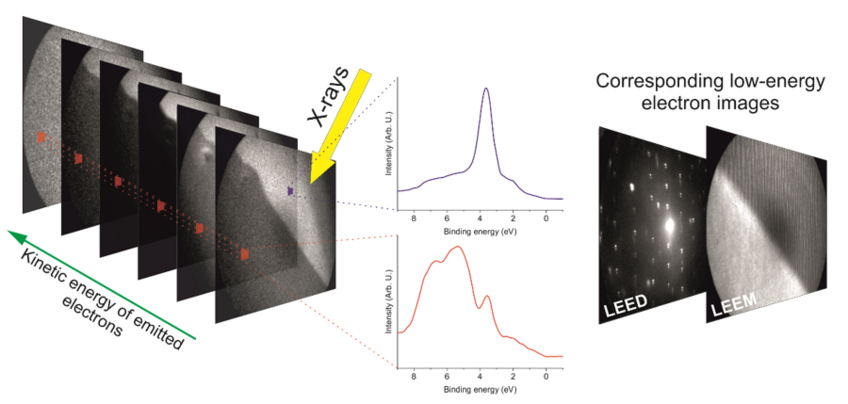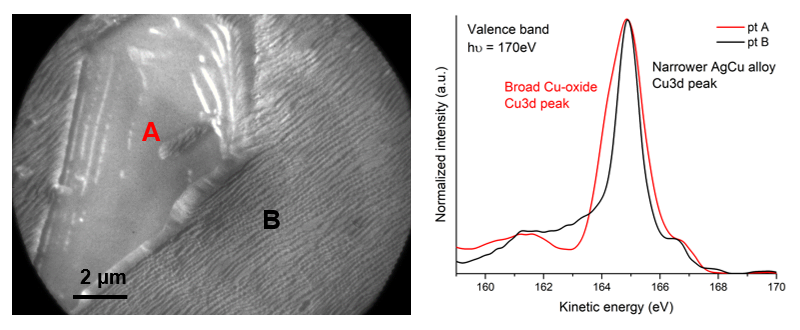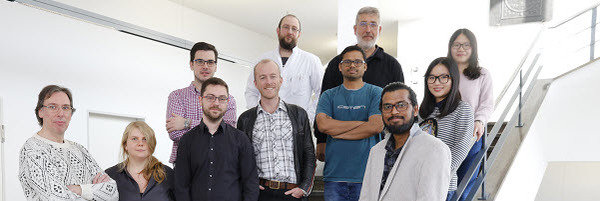
Energy Materials
Materials used in catalytic reactions are exposed to conditions that inevitably lead to microstructural and chemical changes in the bulk and on the surface. To understand their complex interplay and influence on the catalyst´s performance, one requires spatially resolved methods that encompass surface and bulk sensitivity on the nanoscale, ideally in-operando.
In this project we focus on silver-based bimetallic alloy catalysts (AgCu, AgPd, AgNi) that are active in various heterogeneous gas-phase reactions, including ethylene epoxidation and methanol dehydrogenation. We specifically investigate their electronic structure, catalytic properties and how their structure and chemistry change when exposed to reaction conditions. Exposure to such conditions also leads to the formation of new surface phases which can become catalytically relevant. The combination of surface- and bulk-sensitive methods allows us to better understand the influence of bulk processes (e.g. solute segregation to grain boundaries) on the surface dynamics of an active catalyst. Given the fundamental understanding of the development of such a material, one can rationally improve the catalyst’s design (i.e. microstructure/composition) to enhance its activity, stability or selectivity for a desired chemical product.
Employed material characterisation methods encompass near-ambient pressure X-ray spectroscopy (NAP-XPS), environmental scanning electron microscopy (E-SEM), electron backscatter diffraction (EBSD), low-energy electron diffraction (LEED) and atom probe tomography (APT). These are accompanied by synchrotron-based X-ray photoemission electron microscopy (XPEEM) and near-ambient pressure scanning photoemission electron microscopy (NAP-SPEM) and catalytic performance tests. The high spatial resolution of many applied methods allows to identify heterogeneously distributed features and phases. We address many questions with a ‘correlative microscopy’ approach. For instance, based on e.g. findings from spectroscopy regions of interest are selected for post-reaction APT and further analysis of solute distribution at crystalline defects.
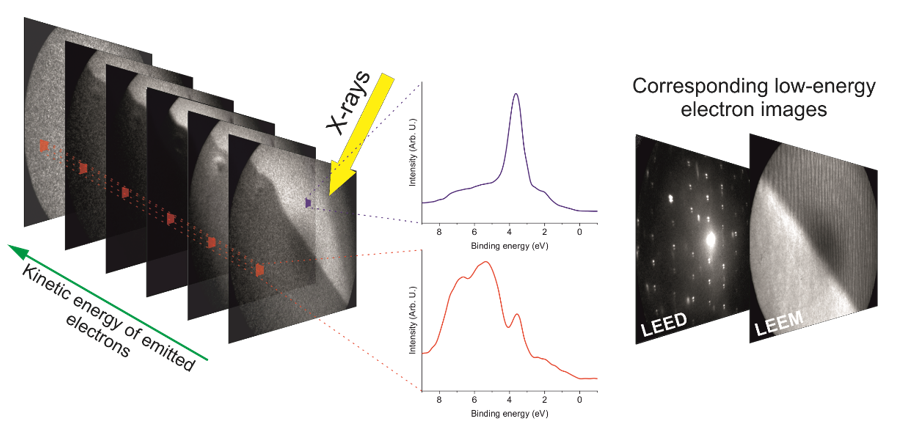
Figure 1 – Working principle of highly surface-sensitive spectromicroscopy (XPEEM setup at SMART beamline at BESSY). Sample surface is illuminated with coherent X-ray beam that leads to emission of photoelectrons. These can be used to produce contrast images at different kinetic energies. Every pixel in the image stack contains spectroscopic information which allows the extraction of photoemission spectra of individual features/regions of interest (ROI). The setup is equipped with a low-energy electron gun to collect corresponding LEEM/LEED images of ROIs.
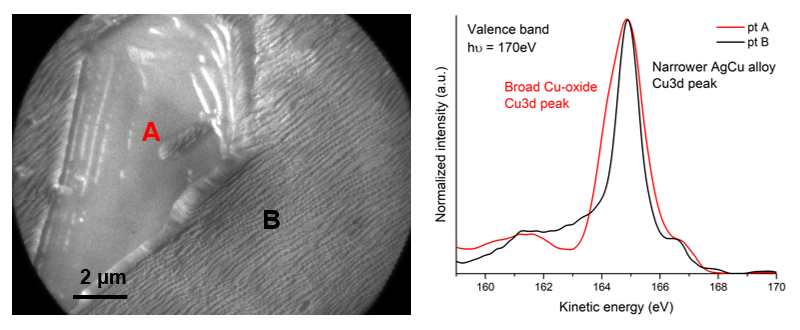
Figure 2 – AgCu alloy exposed to an oxidizing environment. (left) Surface phases are strongly localized and heterogeneously distributed across the catalysts surface. In-situ spatially resolved methods are required to identify e.g. distinct electronic structures of such features. (right) Valence band structures for the two areas marked in the left image. It reveals coexisting Cu2O islands and oxygen reconstructed alloy surface with a distinct narrower Cu d-band.
This project is conducted in collaboration with the Surface Structure Analysis group at MPI CEC and the Institute for Materials & ZGH at Ruhr-Universität Bochum. Funding through the International Max-Planck Research School IMPRS-SURMAT is acknowledged.
